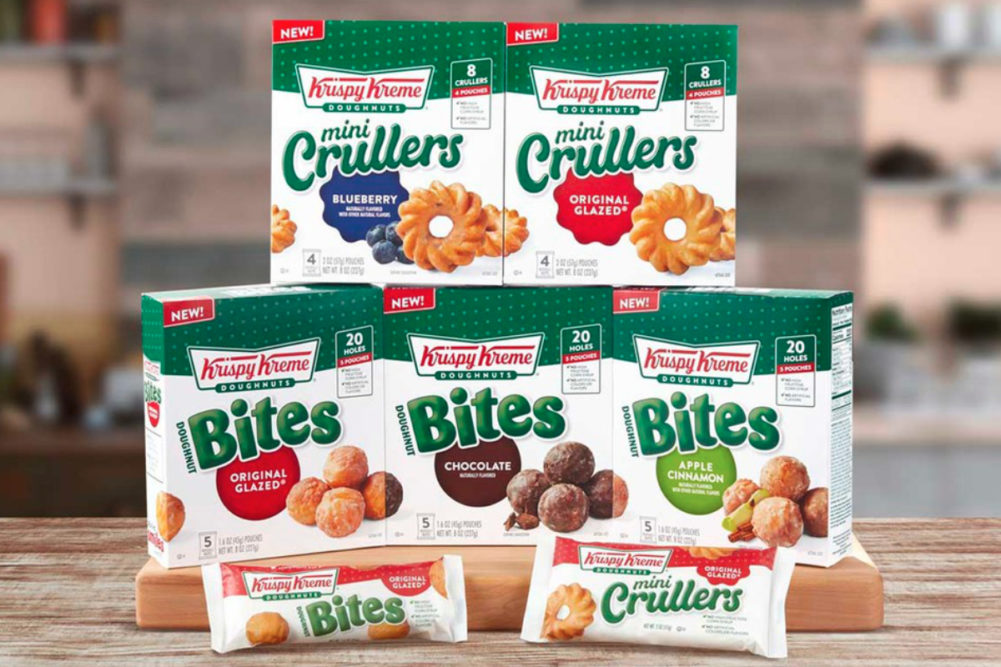WINSTON-SALEM, NC. — The second quarter of 2021 marked Krispy Kreme, Inc.’s return to the market after going public in early July — it also happened to be one of the strongest quarters in the donut chain’s 84-year history.
“Q2’s results demonstrate the effectiveness of our global transformation and our continued progress toward becoming the most loved sweet treat brand in the world,” Michael J. Tattersfield, president and chief executive officer, said during an Aug. 17 conference call with analysts. “Our business is strong, healthy and expanding, a direct result of the foundational work we’ve done to set our omnichannel strategy and deploy our hub-and-spoke model. We believe that our sustained growth in Q2 shows the resilience of our approach as well as the ability to adapt to evolving operating environments.
“Over our five-year transformation journey, Krispy Kreme has evolved into a truly global business with significant growth opportunities still to come. We have made investments and now own and operate our businesses in the UK and Ireland, Australia and New Zealand, Mexico, and the recently acquired business in Japan with partners executing the omnichannel strategy in the remaining international markets. The success of Krispy Kreme brand and our omnichannel strategy around the world highlights the global opportunity ahead.”
Adjusted net income in the second quarter ended July 4 totaled $20.47 million, equal to 14¢ per share on the common stock, up 254% from $5.78 million, or 4¢ per share, in the same period a year ago. Adjusted EBITDA, meanwhile, increased 78% to $52.39 million from $29.47 million.
Net revenues totaled $349.19 million in the second quarter, up 43% from $244.97 million in the same quarter a year ago. Organic revenue increased 23%, representing one of the best quarters on record.
Mr. Tattersfield said Krispy Kreme is focused on three primary growth levers to drive expansion during its transformation.
First, increasing purchasing frequency by giving consumers more reason to buy Krispy Kreme or Insomnia Cookies products through new platforms and channels.
“Building out our e-commerce capability is the primary means for driving frequency,” he explained. “And in the first half of the year, 19% of our global retail sales were from e-commerce, a proportion we expect to keep growing. The power of e-commerce is clear. In the full year 2020, 82% of US e-commerce delivery transactions were incremental to sales, and e-commerce transaction values have increased as we expand our offerings into new areas like catering, gifting and dark kitchen expansion.”
Mr. Tattersfield said Krispy Kreme also has increased purchase frequency through product innovation.
“By constantly evolving our core offering and regularly introducing new products, we provide customers with more reasons to choose Krispy Kreme more often,” he said. “Our occasions-based innovation, which focuses on holiday and major celebratory moments, creates a steady drumbeat of reasons for consumers to purchase donuts in shareable formats of a dozen or more.”
Insomnia Cookies was a key component of Krispy Kreme’s growth in the second quarter, Mr. Tattersfield said.
“A proven winner that has clearly grown beyond its college campus origins, the second quarter saw Insomnia continue to deliver in digital innovation, new product development and operations excellence, including the opening of the 200th cookie shop in West Chester, Pa.,” he said.
The second growth lever involves increasing availability by providing consumers with more convenient ways to buy its products.
To this end, Mr. Tattersfield said that immediately after the end of the second quarter, and for the first time ever, 100% of the chain’s donuts served in the United States and Canada were delivered fresh no matter where they were purchased. He said the company also added 1,300 new global points of access in the first half of fiscal 2021, most in the form of Delivered Fresh Daily (DFD) doors. The company plans to add another 800 to 1,000 points of access per year as it moves forward with its transformation. The company’s Branded Sweet Treat Line, which debuted last year in 4,700 Walmart stores, has been expanded to several new US retailers, including Albertsons.
“While early in its evolution, we believe the sweet treat line is scalable and will allow us to push toward wide distribution through grocery stores and convenience stores,” Mr. Tattersfield said.
Later in the conference call, Joshua Charlesworth, chief operating officer and chief financial officer, provided more details on the Branded Sweet Treat Line. He said the company added three new varieties in the second quarter: s’mores bites, Key lime crullers and chocolate crullers. To support the new varieties and the company’s expansion into additional retailers, Krispy Kreme invested in three new production lines across its factory network during the second quarter, a move Mr. Charlesworth said is expected to increase capacity by more than 200%.
“By leveraging existing infrastructure, we will require less than $2 million in capital investments to do so,” Mr. Charlesworth said. “We expect Branded Sweet Treats to be profitable by the end of 2021. And overall, in the US and Canada, we expect to see Branded Sweet Treats, the New York market and the whole system at large to see margin improvements over time as we continue to deploy the hub-and-spoke model.”
The third and final growth lever is increasing profitability.
“Over the past two years, we have strategically acquired franchisees, allowing us to take control of operations and drive efficiencies,” Mr. Tattersfield said. “As of the end of Q2, we control and operate 85% of the system in the US and Canada and 73% globally. To continue driving margins and profitability, we are expanding our hub-and-spoke manufacturing and distribution model, which enables us to efficiently execute our omnichannel strategy while increasing operating leverage and improving our bottom line.”






